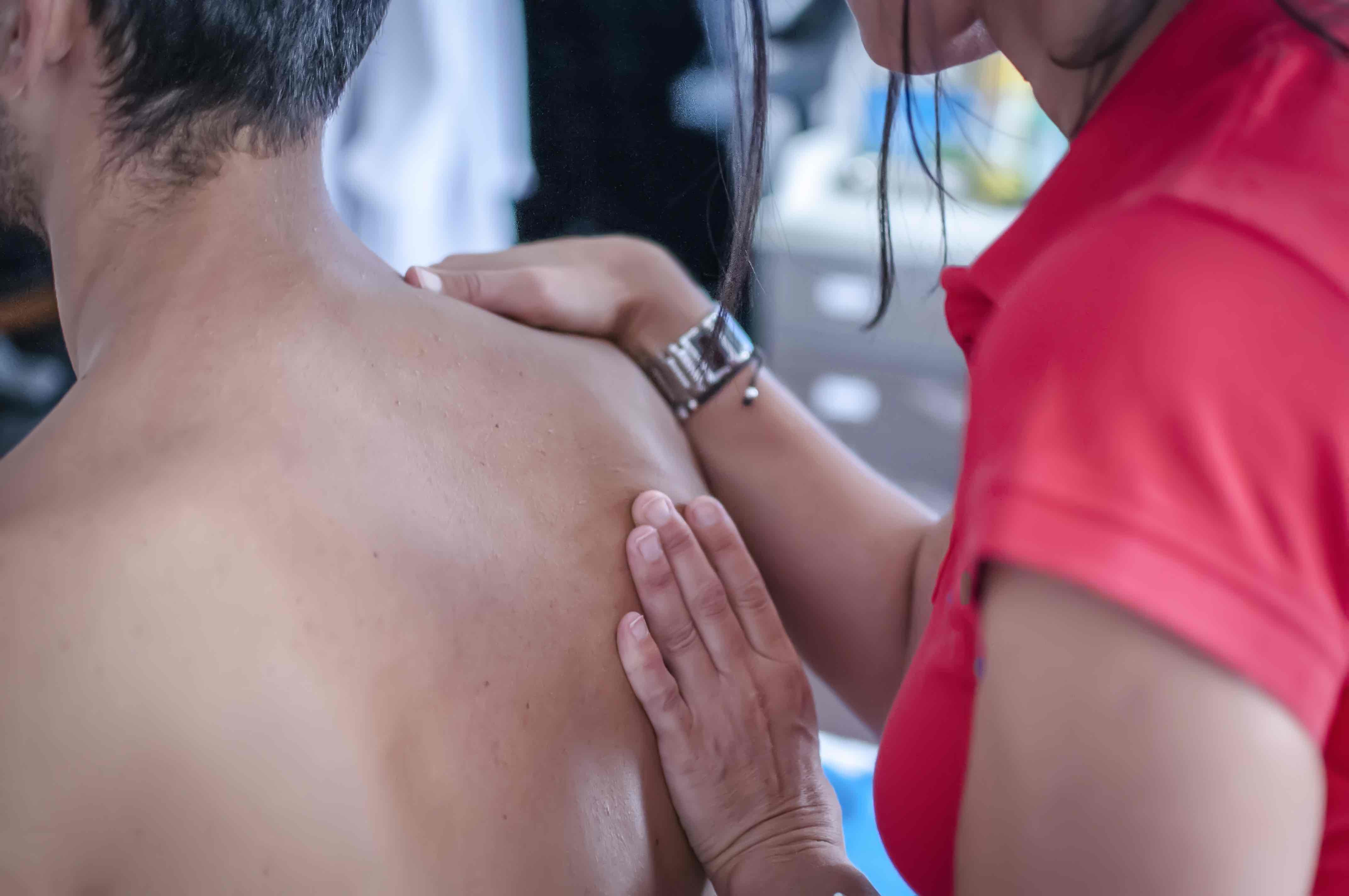

The Resilient Shoulder Series is all about keeping your shoulder healthy and strong so you can bomb serves and rack up kills. This program is for athletes who want to put in the extra effort to keep their body in top shape. By tackling tissue health and mobility, this program helps keep your shoulder moving how it should. The strength aspects target volleyball-specific movement patterns and ensure your rotator cuff and other supporting muscles are well prepared to hit hard, over and over.
For best results, it's recommended to do general strength training for your upper body in addition to the Resilient Shoulder Series. But additional training is not required to complete this program, and your shoulders will still thank you.
You can begin this program if you are currently experiencing some mild-moderate chronic pain in your shoulder, but if you have recently suffered a traumatic injury or currently have a lot of chronic pain, it may be too advanced.
*If you experience pain in any of the exercises in this program, do the ones that don't hurt and have your shoulder looked at by a qualified healthcare professional.



Large arm circles in both directions, done fairly quickly. Try to keep your body in alignment by avoiding extension in your spine.
Perform 10-20 arm circles in each direction before moving on.



Quickly raise your hands in front of you and up as high as you can. Allow your elbows to bend so your hands come down toward your the back of your neck/shoulders. Then reverse the movement and swing your arms down and behind you as far as is comfortable. Remain tall while doing this, avoiding extension in your spine.
Perform 10-20 repetitions before moving on.



Keeping your arms around shoulder height, open them up to either side then cross them in front of you. Your palms should face forward when your arms are open and face down when your arms are crossed. This movement should be done fairly quickly and you can alternate which arm goes on top each repetition if you like.
Do 10-20 repetitions before moving on.



Alternate between the yoga poses downward facing dog and upward facing dog, holding each position for 1-3 seconds before switching. Be strong with your upper body to push the floor away at all times.
Repeat 5-8 times in each position.



Lie on your back with the foam roller across your back at the level of your shoulder blades. Spread your shoulder blades apart by bringing your elbows toward one another - this can be done while supporting your head with your hands, to keep it in line with your body. Keeping your spine in a neutral position, lift your hips up and slowly roll up and down. Cover the area just below your shoulder blades up to just below the base of your neck.
Roll for about 1 minute.
At first, this exercise may be painful; a softer roller will be easier to tolerate early on. Progress by finding a firmer roller or one with a textured, knobby surface.
You may also experience some painless cracking of the joints in your back - you'll probably learn to love these, but if they are not painless see a healthcare practitioner to have a closer look at what might be going on.
*Avoid rolling your lower back or your neck in this position.



Lie sideways over the roller, with your arm positions overhead. While keeping your muscles roll along the side of your shoulder blade and the back of your shoulder.
Roll for about 1 minute on each side.
At first, this exercise may be painful; a softer roller will be easier to tolerate early on. Progress by finding a firmer roller or one with a textured, knobby surface.



Press a tennis ball or lacrosse ball into the soft part of your upper chest, just under your collar bone. Using up and down or circular motions, roll the ball around the area.
Roll for 1 minute on each side.
At first, this exercise may be painful; a softer ball will be easier to tolerate early on. Progress by finding a firmer ball or one with a textured, knobby surface.



Pin a tennis ball or lacrosse ball between the back of your shoulder blade (as shown in the video) and a wall. Roll diagonally up and down across the area. Keep the muscle relaxed while you try to locate tender areas to focus on.
Roll for 1 minute per side.
You may feel pain referring to the front of your shoulder - if so, this is a great spot to focus on while rolling.
Note: This video shows some additional variations that may be beneficial. But for the purposes of your programming, simply rolling is a good place to start.



Lie on your back with the foam roller across your back at the level of your shoulder blades. Spread your shoulder blades apart by bringing your elbows toward one another - this can be done while supporting your head with your hands, to keep it in line with your body. Keeping your hips on the floor, slowly arch your back to extend over the roller. Return to the starting position and repeat. You can lift your hips and roll a little way up or down the roller to target a slightly different area of your back, but all of your extensions should happen with the roller somewhere between just below your shoulder blades to just below the base of your neck.
Complete 20 extensions in total, focusing in areas you feel the most restricted.
You will likely feel some pressure in your back where the roller is pressing into it. At first, this exercise may be painful; a softer roller will be easier to tolerate early on. Progress by finding a firmer roller or one with a textured, knobby surface.
You may also experience some painless cracking of the joints in your back - you'll probably learn to love these, but if they are not painless see a healthcare practitioner to have a closer look at what might be going on.



Hold a dowel or broomstick behind you back with your one hand behind your lower back, one hand behind your neck, and palms facing backward. Grip the dowel tightly. Using your top hand, slowly lift your bottom hand up as high as it can stretch. Hold for 1-2 seconds before reversing the movement.
Perform 10-15 repetitions on each side.
You may feel a strong stretch sensation in your shoulder, but this should not be painful.



Hang on to a bar, rings, or a TRX that allows you to hang with your body roughly horizontally with your feet on the floor. Let go with one arm while maintaining your alignment and avoiding twisting. To make this more challenging, slowly rotate so your free arm drops toward the floor and then return to the starting position. If the exercise is too challenging, simply hang with both hands hanging on.
Hang for a total 10-20 seconds, 3-4 times, resting for 90 seconds in between efforts.



Using a light band attached at a low point near the ground, stand facing sideways to the point of attachment. Reach across your body to grab onto the band, with your palm facing backward. While keeping your arm straight, move it diagonally upward to reach overhead and out to the side. Allow your arm to rotate so that your thumb is pointing backward at the top of the movement. Move slowly back to the starting position and repeat. Ideally use a band that provides resistance for the entire movement, without going slack at the bottom and without being too difficult at the top.
Do 3 sets of 10 repetitions on your hitting shoulder, resting for 90 seconds in between sets. Bonus points for doing it on both shoulders.



In a wide stance, swing a kettlebell backward between your legs using one arm. Switch hands behind your leg and swing the kettlebell around to the front of your body with the other hand. Repeat in the other direction so that the kettlebell travels in a figure 8 pattern.
Do 3 sets of 8 repetitions per side, resting for 90 seconds between sets. Choose a kettlebell that is heavy enough to challenge you, but not so heavy that it's difficult to control.
You can also do this with something that's not a kettlebell and still get the benefits for your shoulder. Anything heavy that doesn't bang into your knees will do the trick.



Starting in a pushup position and keeping your body in a straight line, slowly lower your chest toward the floor, allowing your shoulder blades to glide back and together. Now push your chest away from the floor so that your shoulder blades spread apart as far as they can. Keep your shoulders away from your ears and your arms straight throughout the movement.
Do 3 sets of 10 repetitions, resting for 90 seconds between sets.
If this exercise is too challenging, try doing it with you knees on the floor.